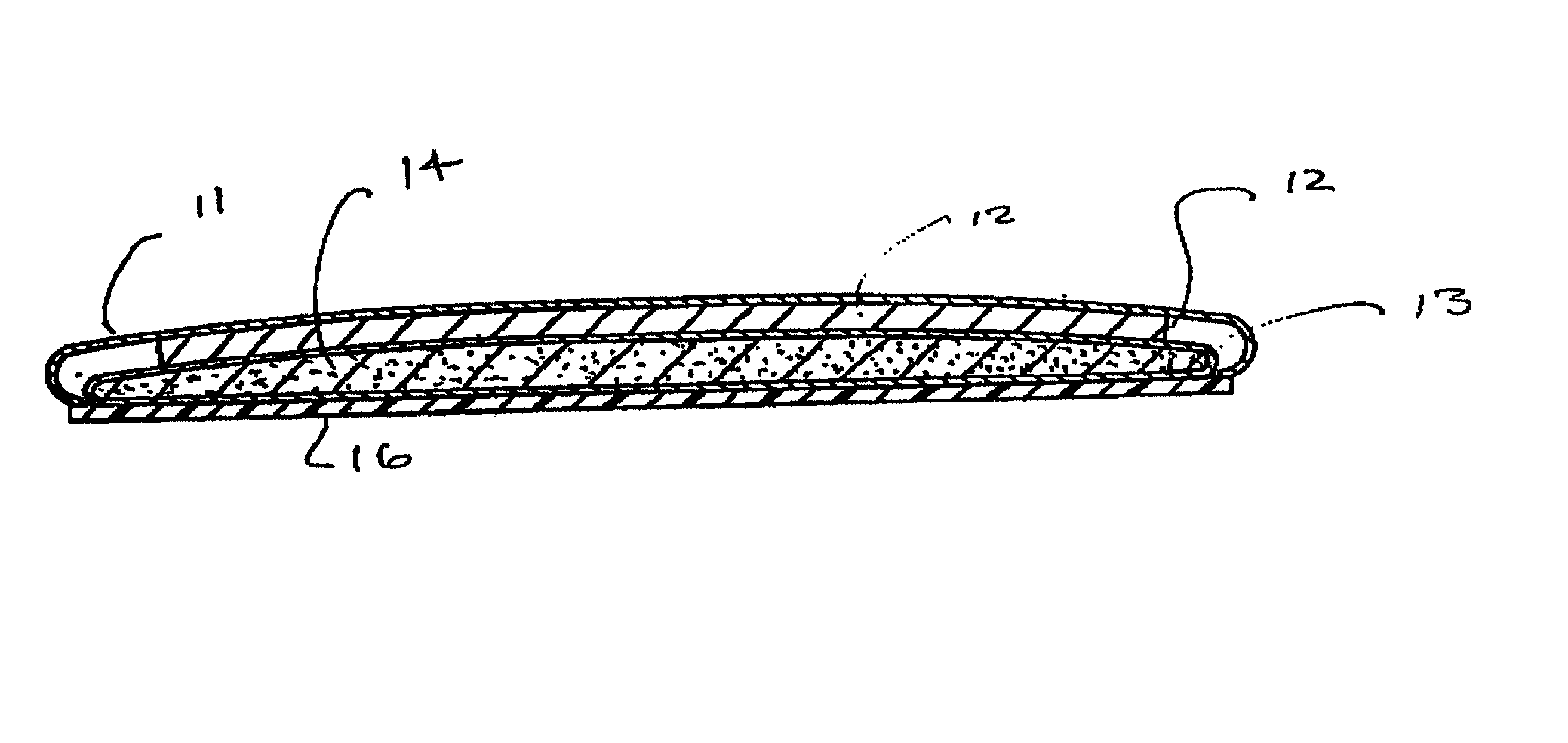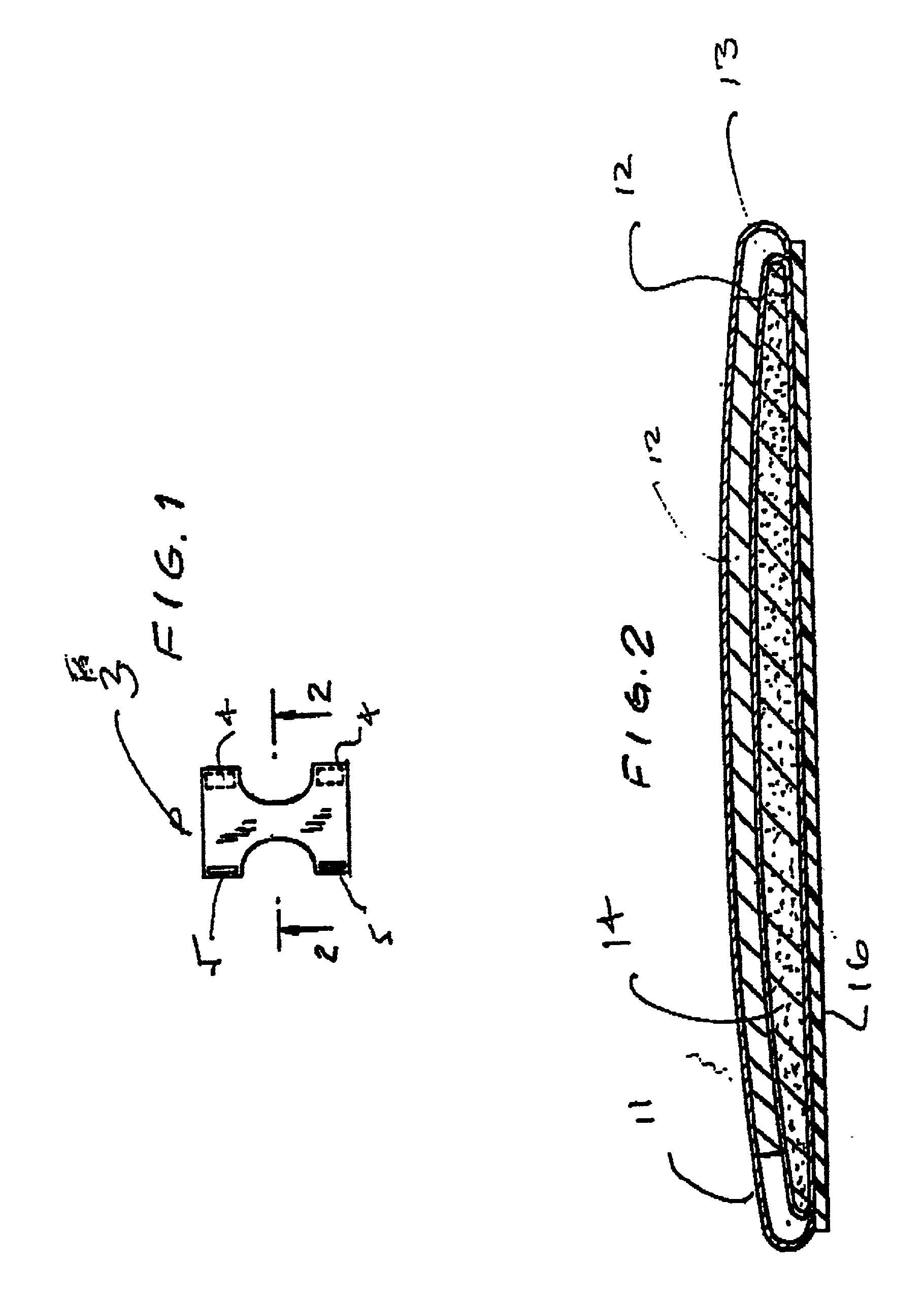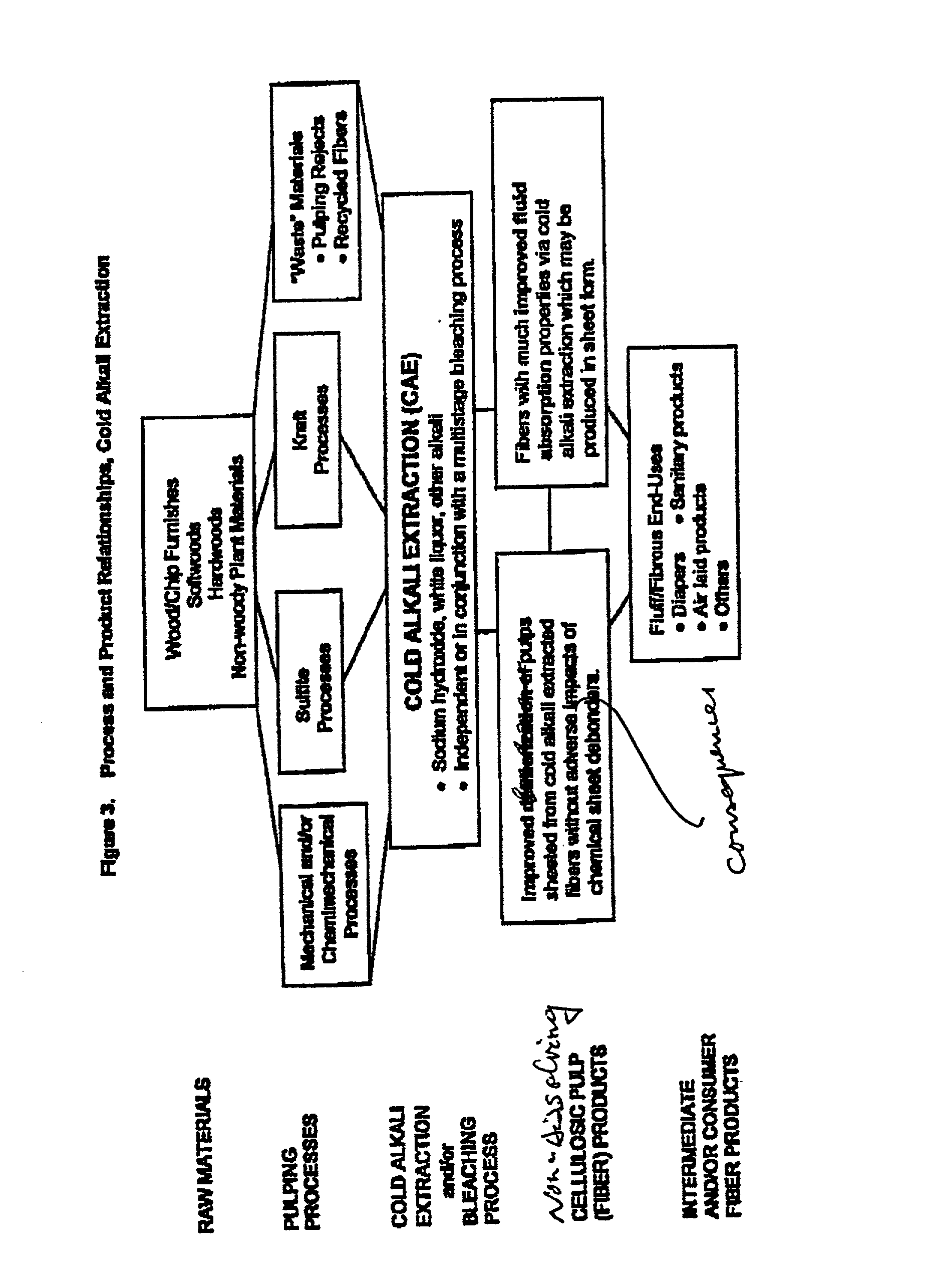Absorbent products and methods of preparation thereof
a technology of absorbent products and products, applied in the field of absorbent products, can solve the problems of inability to obtain sheeted form of cross-linked fibers, and the pulp used in prior art processes for cross-linking purposes is generally not available in sheeted form (rolls or bales of sheets)
- Summary
- Abstract
- Description
- Claims
- Application Information
AI Technical Summary
Problems solved by technology
Method used
Image
Examples
example 1
Improved Pulp Sheet Defiberization: Debonders vs. Cold Alkali Extraction, Kraft Southern Pine Pulp
[0049] Cellulosic pulp is commonly manufactured for fluff and other fibrous end-use in dried, sheeted form. The pulp manufacturer operates the pulp machine to form the sheet from an aqueous suspension of fibers; the sheet once formed is dried to remove about 90% of the moisture. Large rolls of dried, sheeted pulp are produced off the dry end of the pulp machine. These are typically cut into smaller size rolls and / or bales of sheets for distribution to end-use customers.
[0050] It is an advantage that the dried, sheeted pulp defiber easily and uniformly without damage to the individual fibers for those pulp grades being used in various fibrous end-use applications. For example, a fluff pulp will be converted by the end-user from the dried, sheeted pulp to a pad of "fluffed" fibers by mechanical action such as is supplied by a Hammermill or other attrition mill. Chemical agents, debonders,...
example 2
Cold Alkali Extraction for Fiber Property Improvement, Prehydrolyzed Kraft Southern Pine Pulp
[0059] The data presented in Tables I-2 and II-2 of Example 2 illustrate the pulp sheet and fiber property improvements which occurred when cold alkali extraction was applied to pulps cooked from a Southern pine furnish by a prehydrolyzed kraft process. The prehydrolyzed kraft process is a two-stage pulping process, in which the raw material furnish is treated first under a mildly acidic condition (pH of about 3-4), followed by an alkaline stage which is basically the kraft cook illustrated in Example 1.
2 EXAMPLE 2, TABLE I-2 SAMPLE DESIGNATION A-2i B-2i SAMPLE DESCRIPTION Processing Non-debonded Cold Alkali Standard Process Extraction Process Wood Species Southern pine blend-------------> Pulping Process Prehydrolyzed kraft------------> Sheet Debonded Used (?) No No COLD ALKALI EXTRACTION Not Used Used Alkali Used NaOH Solution Strength, % 15 Temperature, .degree. C. 25 Time, H:M 0:10 Consi...
example 3
Cold Alkali Extraction Process: Variable Solution Strength
[0066] From the data given in Tables I-3 through VI-3 of this example, it is apparent that no one set of cold alkali extraction process conditions will result in exactly the same consequences on every type of pulp. Raw material / furnish used, pulping process used, and the position of cold alkali extraction within a bleaching sequence have consequences on what may be the optimum conditions for each type of sample. Secondly, it appears that cold alkali extraction conditions can be selected to enhance some of the fiber properties of the resulting pulp but at the expense of others. Not all fibrous end-uses require improvements in the same properties, thus this apparent versatility of cold alkali extraction conditions might be used to tailor pulp fibers for various fibrous end-use products and / or customers. These points will be discussed in this and subsequent examples.
3 EXAMPLE 3, TABLE I-3 SAMPLE DESIGNATION A-3i B-3i C-3i SAMPLE...
PUM
| Property | Measurement | Unit |
|---|---|---|
| temperature | aaaaa | aaaaa |
| temperature | aaaaa | aaaaa |
| temperature | aaaaa | aaaaa |
Abstract
Description
Claims
Application Information
 Login to View More
Login to View More - R&D
- Intellectual Property
- Life Sciences
- Materials
- Tech Scout
- Unparalleled Data Quality
- Higher Quality Content
- 60% Fewer Hallucinations
Browse by: Latest US Patents, China's latest patents, Technical Efficacy Thesaurus, Application Domain, Technology Topic, Popular Technical Reports.
© 2025 PatSnap. All rights reserved.Legal|Privacy policy|Modern Slavery Act Transparency Statement|Sitemap|About US| Contact US: help@patsnap.com



